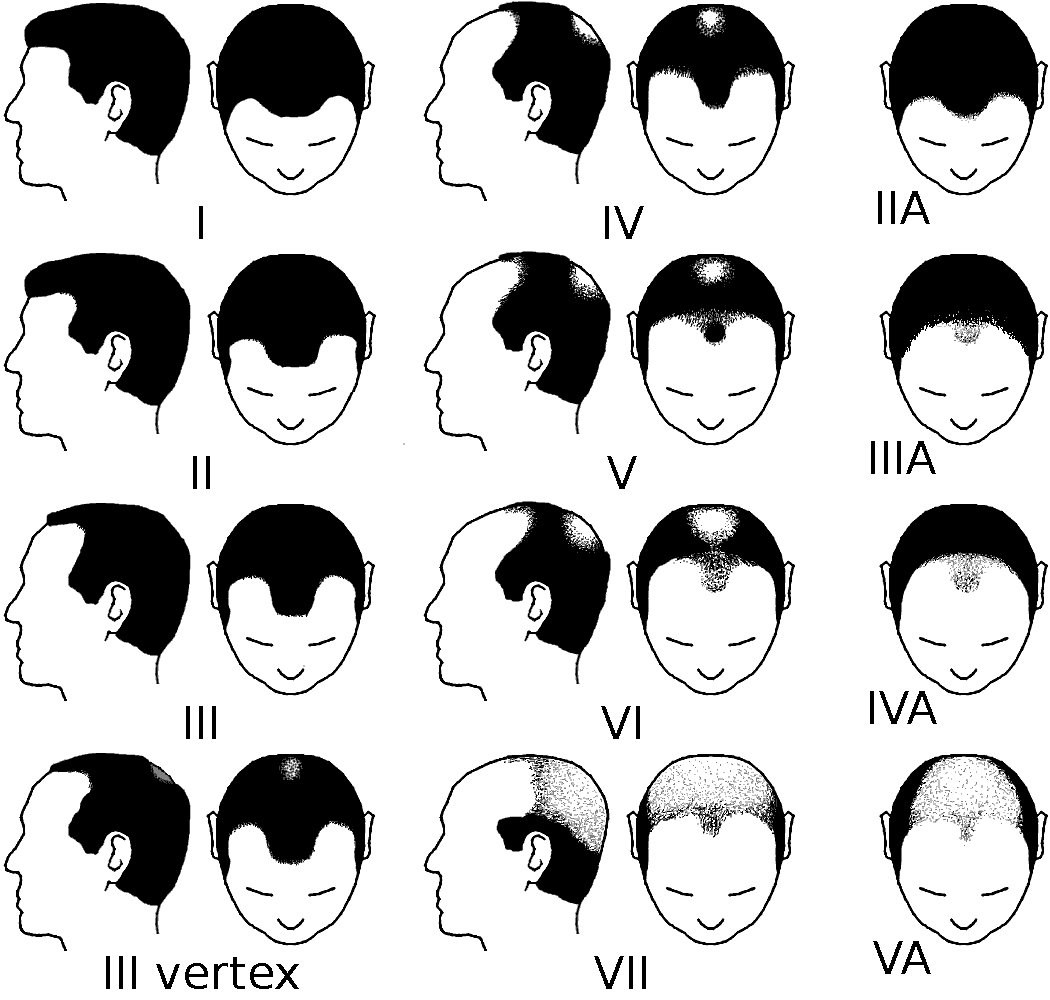More than 80 percent of men and nearly 50 percent of women experience significant hair loss in their lifetime. Dr. Ratushny understands that the treatment of hair loss is not a one-size-fits-all process. Dr. Ratushny likes to perform a personalized evaluation of each of his patient’s hair loss and compose a tailored treatment plan based on the severity of hair loss and patient goals. One key aspect is to understand the severity of hair loss.
The Hamilton-Norwood Scale ranks male pattern hair loss according to 7 stages. This hair loss measurement scale was first introduced by James Hamilton in the 1950s and later revised and updated by hair transplant surgeon Dr. O’Tar Norwood in the 1970s.
Stage 1: No significant hair loss noted. Even though this is a Stage on the male pattern hair loss scale, Norwood 1 is considered a control stage where no hair loss is present.
Stage 2: Slight recession at the temples, often symmetrical. This is also considered to be an adult or mature hairline. Norwood 2 indicates that a man is transitioning from a teenage hairline to an adult one and doesn’t indicate clinically significant hair loss. In general, treatment is not recommended at this Stage since it may never progress to clinically significant androgenetic alopecia (Norwood Stage 3)
Stage 3: This stage is where clinically significant baldness is evident and at this stage is where we recommend hair transplantation and/or medical treatment options for hair loss. There is symmetrical deep recession at the temples that are sparsely covered by hair or bald. Stage 3 Vertex indicates that the hair loss is targeted in the crown (vertex) but the hairline has minimal recession as is seen in Stage 2.
Stage 4: More severe recession at the temples than in Stage 3 and sparse or no hair on the crown. The two areas of hair loss are separated by a band of moderately dense hair that extends across the top of the head.
Stage 5: The temporal and crown hair loss is more advanced than in Stage 4. The crown hair loss is still separated from the frontal hair loss but the band of separating hair is sparse and narrower.
Stage 6: The balding areas on the temples now becomes continuous with the hair loss at the crown. There may be some sparse hairs in the area where there previously was a hair band separating the two zones.
Stage 7: This is the most advanced stage of male pattern hair loss with only a narrow band of hair in a horseshoe shape on the sides and back of the scalp. The remaining hair is usually fine and not dense.
Norwood Class A: Norwood Class A is a variation of the Norwood scale for the less common form of hair loss where the hairline recedes back uniformly rather than in the dual locations of frontal hairline and crown. In this type of hair loss, the hairline recedes from the front to the back, without leaving an island of hair in the middle.
Since hair loss is progressive, a patient’s hair loss journey may take them through various phases of the Hamilton-Norwood Scale throughout their lifetime. Some individuals are genetically destined to progress to Stage 7 hair loss, while in others, the hair loss stops at an earlier stage. During your consultation with Dr. Ratushny, he may try to gauge the speed of progression of your hair loss, as this will inform the surgical treatment options that are available to you.


